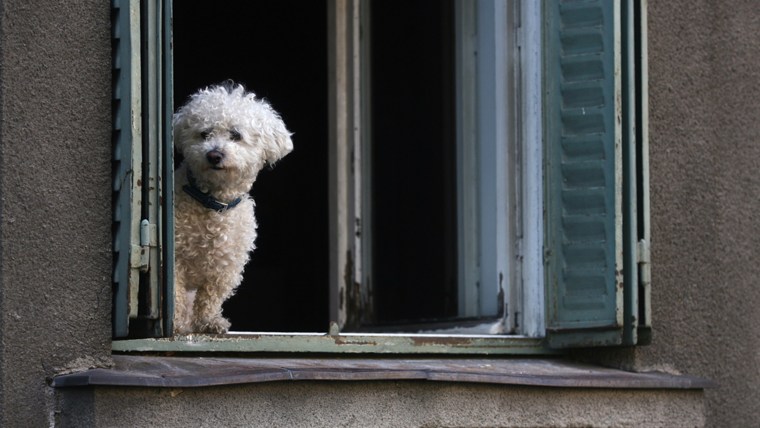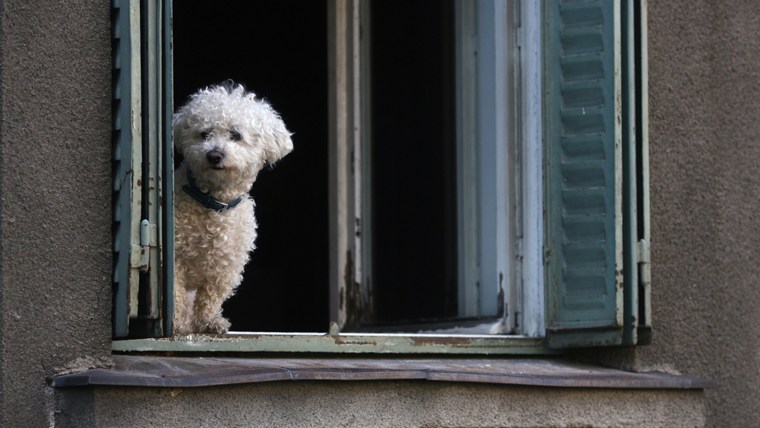It's inevitable that you will need to leave your pup home alone. Some pets handle this well while others react with anxiety, fear and plain-old boredom when they have been left behind. What’s a loving pet owner to do? Veterinarian Katherine Miller of the American Society for the Prevention of Cruelty to Animals (ASPCA) offers her advice.

Understand doggy nature
Dogs are a social species and evolve with packs. They bond very strongly with their human companions. The more strongly bonded the dog is and the less experience he or she has being left alone, the more stressful it will be.
“Leaving domestic dogs home alone all day is a really modern situation,” says Dr. Miller. “Typically, they had things to do, because they were following people around or working on farms. They aren’t evolved to deal with what to do with themselves when they’re alone.”
Teach pets to entertain themselves
Too often, people shower new pets with attention, giving the pup days on end of constant interaction. When the daily grind goes back to normal, the dog is left wondering where his playmate went.
When settling a new pet into your home, it’s essential to get the animal acclimated to being alone for increasingly longer time periods so they can to cope with the separation. Give the pet toys to play with, especially ones to chew on, so he or she is less likely to nibble your favorite slippers.
Crate-train to start
It’s important that your pet be content in a small space such as a crate, just in case you need to confine the animal for their own safety.
“You want your dog to earn house privileges and show he can be trusted,” says Dr. Miller. If you give the dog the run of the house right away, he or she is much more likely to get into things.
Wear the pet out
If the pet is going to be alone all day with little stimulation, make sure it has plenty of stimulation before you go. Go for a long walk or jog or play outside so the pet is thoroughly pooped — even if it means an early morning for you.
“If he’s not well exercised, he’ll get bored and get into stuff,” says Dr. Miller.
Stick to the routine
Dr. Miller’s dog has had the same schedule since puppy hood and they have never had a problem.
“In the mornings, we go out for a run, then she’s confined in the kitchen where she gets a toy that has a treat inside,” Dr. Miller says. “Later, the dog walker comes and she gets let out, and treated to another toy that I’ve filled with wet food and frozen.”
Bottom line: Being consistent is key.
Follow the 8-hour rule
Dr. Miller recommends not leaving your pet alone for more than eight hours. You may need someone come let the dog out in the middle of the day or figure out another way for your pup to have a break.
“It’s more humane for a dog’s well-being, not to mention their bladder and bowels,” she says.
And when you’re home for the evening, set aside some time for your pooch to exercise and socialize so they aren't pining for attention while you’re away.
A version of this article originally appeared on iVillage.
